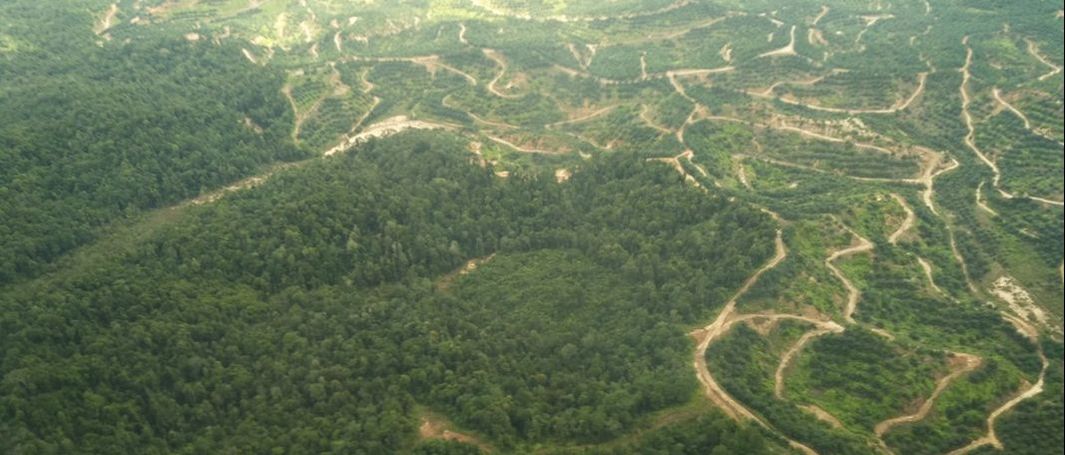Moratorium on palm oil as landscape approach in Sarawak takes final shape
The sustainable use of land and resources in the Malaysian state of Sarawak is taking final shape under the state’s Land Use Policy.
Central to the Land Use Policy is the establishment of six million hectares under Permanent Forest Estates, 2.7 million hectares under the Heart of Borneo area in Sarawak and one million hectares of Totally Protected Forests. Digital technology including 3D laser mapping has been used extensively to help determine the landscape. This information is now being utilized by the government to finalize its Land Use Plan which seeks to address the needs of local peoples while meeting the global standards for sustainable development.
The allocation of six million hectares, which is almost half of its land mass to Permanent Forest Estates (PFEs) is noteworthy. Under state laws, PFEs are defined in three categories:
Forest Reserves. Forest Reserve is a part of the Permanent Forest Estate which will normally be a productive forest, destined to be the principal permanent source of the state's supply of timber and other forest produce which admits limited rights or privileges for the local people to utilize the forest produce. Forest Reserves are constituted wherever the strictest form of control is necessary for the realisation of sections (1) and (2) of the general statement of the Forest Policy.
Protected Forests. In Protected Forests, the Forests Ordinance cap 126 permits the people of Sarawak to take forest produce for their own domestic use, to hunt and to fish, and to pasture cattle. A Protected Forest may be constituted if the primary purpose of constitution is the general protection of soils and waters, and the terrain or vegetation is of such a nature that intensive management as an important productive forest is unlikely to be practicable; or if an extensive Permanent Forest is constituted in little-known territory, where the correct use of all the land cannot yet be determined.
Communal Forests. A Communal Forest will be constituted only where it is clearly the desire of a settled community to set aside a convenient area of woodland to provide the domestic needs of forest produce. Such forest shall be under the control of the Administration, who shall, however, consult the Forest Department on all important technical matters. Communal Forests will normally be large enough only to supply, permanently, the domestic needs of the community specified, allowing for a reasonable increase in population; but exceptions may be made when the necessity of preserving forests for protective reasons is combined with the need for domestic supplies of forest produce.
The challenges in creating a landscape approach in Sarawak have been compounded by the fact that Sarawak is home to different tribes with different needs. The historical human settlement of Sarawak has seen different tribes from the seafaring Melanaus coming onto coastal lands while others including the Kelabits have settled in the mountainous regions. Adding to the mix are the semi-nomadic Penan tribes some of which continue to move from one area to another as part of their traditional lifestyles.
Key Industries as a foundation towards sustainable development
At 12.4 million hectares, Sarawak has one of the biggest land masses among Malaysian states. Its natural resources including timber, crude oil and palm oil has powered its development since it gained independence from the United Kingdom in 1963. Even as it seeks to industrialize itself to decrease dependency on natural resource extraction for revenue, the three big natural resources will be needed to fund its transition from a producer of raw materials to higher value downstream products or industrial goods.
Data from the Global Forest Watch provide an indication of where the oilpalm and timber industries are but these indications tell only a fraction of the story behind Sarawak’s extractive industries. In a complex mix of society, the government has previously responded with a complex range of solutions. As it looks towards sustainable development, it is calling upon experts in the fields of conservation to assist the state with a landscape approach.
Sarawak has recently signed a Memorandum of Agreement with the Copenhagen Zoo to help with conservation in its Heart of Borneo area. In addition, one of the most important areas for biodiversity in Sarawak which is Maludam National Park, gained financial support for its preservation from the Global Environment Facility (GEF) in Washington DC earlier this year. Conservation initiatives are also being extended to its coastal areas where proposals for the creation of Kuala Lawas National Park and Luconia Shoals National Park will see the protection of an estimated 1.2 million hectares of marine parks as the state adds blue carbon into its goals for sustainable development..
To facilitate the final stages of its landscape approach, the Chief Minister of Sarawak, Datuk Patinggi Abang Johari Tun Openg, has placed a moratorium on new licenses for timber and oil palm with the exception of lands under the control of indigenous peoples. This represents a significant step in finalizing its Land Use Policy and supports the Chief Minister’s pledge that Sarawak will not sacrifice the environment for development.
The sustainable use of land and resources in the Malaysian state of Sarawak is taking final shape under the state’s Land Use Policy.
Central to the Land Use Policy is the establishment of six million hectares under Permanent Forest Estates, 2.7 million hectares under the Heart of Borneo area in Sarawak and one million hectares of Totally Protected Forests. Digital technology including 3D laser mapping has been used extensively to help determine the landscape. This information is now being utilized by the government to finalize its Land Use Plan which seeks to address the needs of local peoples while meeting the global standards for sustainable development.
The allocation of six million hectares, which is almost half of its land mass to Permanent Forest Estates (PFEs) is noteworthy. Under state laws, PFEs are defined in three categories:
Forest Reserves. Forest Reserve is a part of the Permanent Forest Estate which will normally be a productive forest, destined to be the principal permanent source of the state's supply of timber and other forest produce which admits limited rights or privileges for the local people to utilize the forest produce. Forest Reserves are constituted wherever the strictest form of control is necessary for the realisation of sections (1) and (2) of the general statement of the Forest Policy.
Protected Forests. In Protected Forests, the Forests Ordinance cap 126 permits the people of Sarawak to take forest produce for their own domestic use, to hunt and to fish, and to pasture cattle. A Protected Forest may be constituted if the primary purpose of constitution is the general protection of soils and waters, and the terrain or vegetation is of such a nature that intensive management as an important productive forest is unlikely to be practicable; or if an extensive Permanent Forest is constituted in little-known territory, where the correct use of all the land cannot yet be determined.
Communal Forests. A Communal Forest will be constituted only where it is clearly the desire of a settled community to set aside a convenient area of woodland to provide the domestic needs of forest produce. Such forest shall be under the control of the Administration, who shall, however, consult the Forest Department on all important technical matters. Communal Forests will normally be large enough only to supply, permanently, the domestic needs of the community specified, allowing for a reasonable increase in population; but exceptions may be made when the necessity of preserving forests for protective reasons is combined with the need for domestic supplies of forest produce.
The challenges in creating a landscape approach in Sarawak have been compounded by the fact that Sarawak is home to different tribes with different needs. The historical human settlement of Sarawak has seen different tribes from the seafaring Melanaus coming onto coastal lands while others including the Kelabits have settled in the mountainous regions. Adding to the mix are the semi-nomadic Penan tribes some of which continue to move from one area to another as part of their traditional lifestyles.
Key Industries as a foundation towards sustainable development
At 12.4 million hectares, Sarawak has one of the biggest land masses among Malaysian states. Its natural resources including timber, crude oil and palm oil has powered its development since it gained independence from the United Kingdom in 1963. Even as it seeks to industrialize itself to decrease dependency on natural resource extraction for revenue, the three big natural resources will be needed to fund its transition from a producer of raw materials to higher value downstream products or industrial goods.
Data from the Global Forest Watch provide an indication of where the oilpalm and timber industries are but these indications tell only a fraction of the story behind Sarawak’s extractive industries. In a complex mix of society, the government has previously responded with a complex range of solutions. As it looks towards sustainable development, it is calling upon experts in the fields of conservation to assist the state with a landscape approach.
Sarawak has recently signed a Memorandum of Agreement with the Copenhagen Zoo to help with conservation in its Heart of Borneo area. In addition, one of the most important areas for biodiversity in Sarawak which is Maludam National Park, gained financial support for its preservation from the Global Environment Facility (GEF) in Washington DC earlier this year. Conservation initiatives are also being extended to its coastal areas where proposals for the creation of Kuala Lawas National Park and Luconia Shoals National Park will see the protection of an estimated 1.2 million hectares of marine parks as the state adds blue carbon into its goals for sustainable development..
To facilitate the final stages of its landscape approach, the Chief Minister of Sarawak, Datuk Patinggi Abang Johari Tun Openg, has placed a moratorium on new licenses for timber and oil palm with the exception of lands under the control of indigenous peoples. This represents a significant step in finalizing its Land Use Policy and supports the Chief Minister’s pledge that Sarawak will not sacrifice the environment for development.

